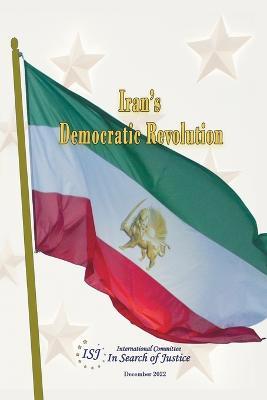IRAN's DEMOCRATIC REVOLUTION

IRAN's DEMOCRATIC REVOLUTION
Iran has been going through successive revolutions since the Constitutional Revolution of the early 1900s that culminated in its first elected parliament and limited the monarchy's absolute power. However, foreign interference and successive coups robbed Iranians of the chance to establish a democratic legacy: The democratic government of Mohammad Mosaddegh in the 1950s was short-lived.The ouster of the nationalist Prime Minister Mosaddegh by a CIA/MI6 engineered coup in 1953 left Iran in the hands of a detested dictator, who in his later years became megalomaniacal, despotic, and who suppressed democratic forces with torture and execution. The violence that the Shah's regime unleashed against Iranian society was the least of the damage he did. The political vacuum he created for Ruhollah Khomeini became his lasting legacy.The Khomeini regime, from which Ali Khamenei and his cohorts hail, is the most recent reincarnation of authoritarianism and despotism in Iran. The regime rode a wave of "anti-imperialist" victimhood, subdued Iranian society with foreign wars and crises, and held a guilt-ridden Western community at bay with ethno-religious claims to alternative theories of "Islamic" human rights, "Islamic" democracy, and "Islamic" justice.The new Iranian revolution unfolding before our eyes, pursuing the goals of freedom and democracy of the 1979 revolution, refutes those claims, tears down the regime's lies, and lays claim to Iranian society's inalienable and universal right to individual and civil liberties, a democratic republic, and the rule of law.This anthology of writings, by expert analysts with insights into the complicated political landscape of Iran, deals with the recent uprising sparked by the murder in custody of Mahsa Amini on September 16, 2022. Ever since 2017, and throughout 2018 and 2019, when uprisings rocked Iran with increased frequency and cataclysmic force, observers and social scientists began warning that the regime would face society's fury in the next social upheaval around the corner.The uprising was therefore not unforeseen, nor can it be understood in the limited context, however tragic, of one unjust and extrajudicial killing. The criminal killing of Mahsa Amini was not a one-off injustice, but a byproduct of an illegitimate system that the people have shown they will no longer tolerate.In this anthology, the authors lend insight and clarity to puzzling aspects of a complex movement. In the first essay, Dr. Behrouz Pouy
61.69Lei
61.69Lei
Indisponibil
Descrierea produsului
Iran has been going through successive revolutions since the Constitutional Revolution of the early 1900s that culminated in its first elected parliament and limited the monarchy's absolute power. However, foreign interference and successive coups robbed Iranians of the chance to establish a democratic legacy: The democratic government of Mohammad Mosaddegh in the 1950s was short-lived.The ouster of the nationalist Prime Minister Mosaddegh by a CIA/MI6 engineered coup in 1953 left Iran in the hands of a detested dictator, who in his later years became megalomaniacal, despotic, and who suppressed democratic forces with torture and execution. The violence that the Shah's regime unleashed against Iranian society was the least of the damage he did. The political vacuum he created for Ruhollah Khomeini became his lasting legacy.The Khomeini regime, from which Ali Khamenei and his cohorts hail, is the most recent reincarnation of authoritarianism and despotism in Iran. The regime rode a wave of "anti-imperialist" victimhood, subdued Iranian society with foreign wars and crises, and held a guilt-ridden Western community at bay with ethno-religious claims to alternative theories of "Islamic" human rights, "Islamic" democracy, and "Islamic" justice.The new Iranian revolution unfolding before our eyes, pursuing the goals of freedom and democracy of the 1979 revolution, refutes those claims, tears down the regime's lies, and lays claim to Iranian society's inalienable and universal right to individual and civil liberties, a democratic republic, and the rule of law.This anthology of writings, by expert analysts with insights into the complicated political landscape of Iran, deals with the recent uprising sparked by the murder in custody of Mahsa Amini on September 16, 2022. Ever since 2017, and throughout 2018 and 2019, when uprisings rocked Iran with increased frequency and cataclysmic force, observers and social scientists began warning that the regime would face society's fury in the next social upheaval around the corner.The uprising was therefore not unforeseen, nor can it be understood in the limited context, however tragic, of one unjust and extrajudicial killing. The criminal killing of Mahsa Amini was not a one-off injustice, but a byproduct of an illegitimate system that the people have shown they will no longer tolerate.In this anthology, the authors lend insight and clarity to puzzling aspects of a complex movement. In the first essay, Dr. Behrouz Pouy
Detaliile produsului










